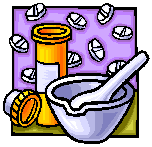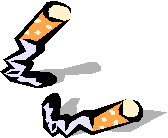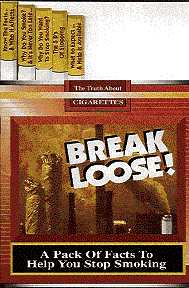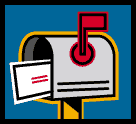DOH Medicaid Update July 2002 Vol. 17, No. 7
Office of Medicaid Management
DOH Medicaid Update
July 2002 Vol.17, No.7
State of New York
George E. Pataki, Governor
Department of Health
Antonia C. Novello, M.D., M.P.H., Dr. P.H.
Commissioner
Medicaid Update
is a monthly publication of the
New York State Department of Health,
Office of Medicaid Management,
14th Floor, Room 1466,
Corning Tower, Albany,
New York 12237
Table of Contents
Reduction of Incidence of Type 2 Diabetes
Healthy NY: Health Care For Working New Yorkers
Seminars Offered to New Providers
Asthma Triggers and Assessment Questions
Smoking Cessation: Free Patient Materials
Physician Modifier Codes Used For Billing
Dental Reimbursement: Sealants and Evaluations
Durable Medical Equipment: Breast Pump Rental Reimbursement
Billing for Botulinum Toxin Type B (Myobloc)
Pharmacy: Answers to Common Questions
All Providers: Changing Your Address?
Home and Community Based Waiver: New Restriction/Exception Code
HIPAA News
New York's Health Care Proxy Form
NEW Medicaid Mandatory Generic Program to Begin Exemption Form Available
Return to Table of Contents

Effective October 1, 2002, Medicaid will require a prior authorization for brand name drugs when there is an A-rated generically and therapeutically equivalent product available.
The Commissioner of Health can, however, authorize exemptions from the prior authorization requirements for selected drugs, on a product specific basis.
Interested parties can begin submitting requests for drug product exemptions to the new Medicaid Pharmacy and Therapeutics (P & T) Committee using a standardized form, beginning July 1, 2002. The form is available on the Department of Health website at:
or you may call the Pharmacy Policy Unit for a copy of the form at (518) 486-3209.
Based on these submissions, the Committee will make recommendations to the Commissioner regarding which products should be excluded from the mandatory generic requirements. Drugs approved for exemption by the Commissioner will not be subject to prior authorization.
More information regarding the Medicaid Mandatory Generic Program will become available in the coming months. Please be sure to review upcoming editions of the Medicaid Update for news of this program.


REDUCTION OF INCIDENCE OF TYPE 2 DIABETES
Return to Table of Contents
Type 2 Diabetes Mellitus is a serious and costly disease affecting approximately eight percent of adults in the United States. Diagnosis of type 2 diabetes is not typically made until complications are present. Once diagnosed, treatment prevents some of the devastating complications, but does not usually restore normoglycemia. Some of the major risk factors for developing diabetes are: elevated fasting and post-load plasma glucose concentrations, being overweight, and having a sedentary lifestyle. The Diabetes Prevention Program Research Group hypothesized that modifying these risk factors for diabetes and by implementing a lifestyle intervention program or the administration of metformin would prevent or delay the development of diabetes.
During the period of 1996-1999, Research Group conducted a large randomized clinical trial involving adults (mean age of 51 years) in the United States who were at high risk for the development of type 2 diabetes. Eligible participants were randomly assigned to one of three interventions: standard lifestyle recommendations plus metformin (850 mg twice daily), standard lifestyle recommendations plus a placebo, or an intensive lifestyle modification program.
It was concluded from the study that the intensive lifestyle modification program was the most effective. At the conclusion of the nearly three year study, 29 percent of the people in the placebo group had developed diabetes, compared with 22 percent with metformin and just 14 percent of the those in the intensive lifestyle modification program. The goals of the intensive lifestyle intervention program were to maintain a weight reduction of at least seven percent of initial body weight through a healthy low-calorie, low-fat diet and to engage in physical activity of moderate intensity, such as brisk walking, for at least 150 minutes per week and no medication.
In order to possibly delay or prevent type 2 diabetes, it is important that practitioners encourage patients to start 20-30 minutes of walking or other activities every day and to cut calories with a healthy diet that includes lots of fruits and vegetables.
Source: New England Journal of Medicine 346: 393, 2002
The Medicaid Program reimburses for medically necessary care, services and supplies for the diagnosis and treatment of diabetes.
For information, please contact the Bureau of Program Guidance at (518) 474-9219, or go to:
HEALTHY NY
AFFORDABLE COMPREHENSIVE HEALTH CARE
FOR WORKING NEW YORKERS
Return to Table of Contents
Governor Pataki and the State of New York have taken a leadership role in specifically addressing the State's uninsured population. The Healthy NY program, a part of the Health Care Reform Act (HCRA) 2000, is designed to ensure that affordable health benefits are accessible to New York working uninsured individuals.
The program is designed to encourage small employers to offer health insurance coverage to their employees, and to make coverage available to uninsured employees whose employers do not provide group health insurance.
Since January 1, 2001, all health maintenance organizations (HMOs) in New York offer Healthy NY. Healthy NY creates a standardized, comprehensive and affordable health insurance benefit package.
The program is available to small employers, with 50 or fewer eligible employees, who have not offered group health insurance during the twelve-month period preceding application.
Sole proprietors and working uninsured individuals may also participate by purchasing the streamlined benefits package, if they meet certain criteria.
Generally, the sole proprietor and the working uninsured individuals must have been uninsured for 12 months prior to applying for Healthy NY. However, this twelve-month requirement will not apply if the sole proprietor or working uninsured individual had coverage but lost it due to one of the following reasons:
- loss of employment
- death of a family member
- change of employment
- change of residence
- discontinuance of a group health insurance contract
- expiration of COBRA or continuation of coverage
- legal separation, divorce or annulment
- loss of eligibility for group health insurance
- reaching the maximum age for dependent coverage
In addition, sole proprietors and uninsured individuals must have a gross household income at or below 250% of the federal poverty level. Qualifying individuals must also be ineligible for Medicare.
Additional information on Healthy NY, including standardized applications and premium rates, can be obtained:
online at www.HealthyNY.com or
by contacting the toll free hotline at 1 (866) Healthy NY (1-866-432-5849).
Schedule of Medicaid Seminars for New Providers
Return to Table of Contents
Computer Sciences Corporation (CSC), the fiscal agent for the New York State Medicaid Management Information System (MMIS), announces the following schedule of Introductory Seminars. Topics will include:
- Overview of MMIS
- Discussion of Medicaid Managed Care
- Explanation of 90-day Regulation
- Explanation of MMIS Provider Manual
- Overview of Billing Options
- Explanation of Utilization Threshold Program
Please indicate the seminar(s) you wish to attend below:
September 12, 2002 - - 10:00 AM
Chautauqua County Dept. of Social Services
Hall R. Clothier Bldg. Auditorium
3 North Erie Street
Mayville, NY 14657
October 1, 2002 - - 10:00 AM
Genesee County Dept. of Social Services
Suite 3 (Large Conference Room)
5130 East Main Street
*Batavia, NY
October 3, 2002 - - 10:00 AM or 1 PM
Lockport Public Library
Rear Entrance
23 East Avenue
Lockport, NY
Additional seminars may be scheduled as new programs are implemented or changes to existing billing procedures are announced.
If the seminar address is not listed above, a CSC representative will contact you at least two weeks prior to the seminar date to confirm attendance and provide seminar address information. Each seminar will last approximately two hours.
Please register early to attend sites marked with (*) because seating is limited.
Direct questions about these seminars to CSC as follows:
Practitioner Services (800) 522-5518 or (518) 447-9860
Institutional Services (800) 522-1892 or (518) 447-9810
Professional Services (800) 522-5535 or (518) 447-9830
To register, please mail the completed page to:
Computer Sciences Corporation
Attn.: Provider Outreach
800 North Pearl Street
Albany, NY 12204
Or, fax a copy of the completed page to: 518-447-9240
Note: Please keep a copy of your seminar choice for your records. No written confirmations will be sent.
ASTHMA TRIGGERS
ALLERGENS or IRRITANTS
Return to Table of Contents



People with asthma have very sensitive airways that react to triggers that may cause asthma symptoms. It is important for people with asthma to find out what their asthma triggers are and to learn ways to control them. Asthma triggers affect people differently but studies have shown that if they are reduced or eliminated, symptoms and the need for medications are reduced and lung function is improved.
TRIGGERS can be classified as either IRRITANTS or ALLERGENS
Irritants include gases such as volatile organic compounds (VOC) that can aggravate airways and cause inflammation. Examples of irritants include: tobacco smoke, household dust, nitrogen dioxide, and chemical odors.
Allergens are materials that cause an immune-type reaction in people who are sensitized to these materials. Allergens found in indoor air are primarily biological material such as pet dander, cockroach and other insect pest particles, pollen, bacteria and mold.
For successful long-term asthma management, it is essential to identify and reduce exposures to relevant allergens and irritants and to control other factors that have been shown to increase asthma symptoms and/or precipitate asthma exacerbations. Using the correct medications, reducing exposure to triggers and learning how to manage asthma as a chronic disease can reduce the frequency and severity of asthma symptoms.
COMMON TRIGGERS
Tobacco Smoke Pollen Diesel Exhaust Dyes
Exercise Mold Air Pollution Formaldehyde
Stress Animal Dander Isocyanates Wood Dust
Cold Air Dust Mite Debris Cockroach Debris
The NYS Medicaid Program reimburses for medically necessary care, services, and supplies for the diagnosis and treatment of asthma. For more information, please contact the Bureau of Program Guidance at (518) 474-9219.
More information about asthma and asthma triggers may be found on the following websites:
New York State Department of Health
http://www.health.state.ny.us/diseases/asthma/index.htm
Centers for Disease Control & Prevention
http://www.cdc.gov/nceh/airpollution/asthma/default.htm
American Lung Association
http://www.lungusa.org/asthma/
The following chart is a tool for practitioners to use to determine their patients exposure to irritants and allergens.
Assessment Questions * For Environmental & Other Factors
That Can Make Asthma Worse
Inhalant Allergens
Does the patient have symptoms year round? (If yes, ask the following questions. If no, see next set of questions.)
- Does the patient keep pets indoors? What type?__________
- Does the patient have moisture or dampness in any room of his or her home (e.g., basement)? (Suggests house-dust mites, molds.)
- Does the patient have mold visible in any part of his or her home? (Suggests molds.)
- Has the patient seen cockroaches in his or her home in the past month? (Suggests significant cockroach exposure.)
- Assume exposure to house-dust mites unless patient lives in a semiarid region. However, if a patient living in a semiarid region uses a swamp cooler, exposure to house-dust mites must still be assumed.
Do symptoms get worse at certain times of the year?(If yes, ask when symptoms occur.)
- Early spring?(trees)
- Late spring?(grasses)
- Late summer to autumn?(weeds)
- Summer and fall? (Alternaria, Cladosporium)
Tobacco Smoke
- Does the patient smoke?
- Does anyone smoke at home or work?
- Does anyone smoke at the child's day care?
Indoor/Outdoor Pollutants and Irritants
- Is a wood-burning stove or fireplace used in the patient's home?
- Are there unvented stoves or heaters in the patient's home?
- Does the patient have contact with other smells or fumes from perfumes, cleaning agents, or sprays?
Workplace Exposures
- Does the patient cough or wheeze during the week, but not on weekends when away from work?
- Do the patient's eyes and nasal passages get irritated soon after arriving at work?
- Do coworkers have similar symptoms?
- What substances are used in the patient's worksite? (Assess for sensitizers.)
Rhinitis
- Does the patient have constant or seasonal congestion and/or postnasal drip?
Gastroesophageal Reflux
- Does the patient have heartburn?
- Does food sometimes come up into the patient's throat?
- Has the patient had coughing, wheezing, or shortness of breath at night in the past 4 weeks?
- Does the infant vomit followed by cough or have wheezy cough at night? Are symptoms worse after feeding?
Sulfite Sensitivity
- Does the patient have wheezing, coughing, or shortness of breath after eating shrimp, dried fruit, or processed potatoes or after drinking beer or wine?
Medication Sensitivities and Contraindications
- What medication does the patient use now (prescription and nonprescription)?
- Does the patient use eyedrops? What type?
- Does the patient use any medications that contain beta-blockers?
- Does the patient ever take aspirin or other nonsteroidal anti-inflammatory drugs?
- Has the patient ever had symptoms of asthma after taking any of these medications?
*These questions are samples and do not represent a standardized assessment or diagnostic instrument. The validity and reliability of these questions have not been assessed.
Source: Expert Panel Report 2: Guidelines for the Diagnosis and Management of Asthma (Bethesda, MD): National Institutes of Health, National Heart, Lung and Blood Institute: 1997.
Patients with asthma at any level of severity should avoid:
- Exposure to allergens to which they are sensitive.
- Exposure to environmental tobacco smoke.
- Exertion when levels of air pollution are high.
- Sulfite-containing and other foods to which they are sensitive.
STOP SMOKING
MATERIALS OFFER
Return to Table of Contents


New patient stop smoking materials for health care providers, pharmacies and community organizations are available through the New York State Smokers' Quitline.
The new materials include:

- Break Loose From Smoking - Smoking cessation tear-off pads (100 sheets/pad)
- Break Loose: A Pack of Facts to Help You Stop Smoking - pocketsize brochure
- Ready To Stop Smoking: There is Help Available - Quitline handout cards (3.5' x 2')
To Order:
Call the NYS Smokers' Quitline at
1-866-NYQUITS (1-866-697-8487)
or
Visit their website at
Reminder: NYS Medicaid covers both prescription and non-prescription smoking cessation agents. For more information on Medicaid's smoking cessation coverage policy, contact the Pharmacy Policy & Operations Unit at (518) 486-3209.
REFRESHER ON THE PURPOSE OF PHYSICIAN MODIFIER CODES
Return to Table of Contents
Under certain circumstances, the procedure code identifying a special procedure or service delivered by a physician must be expanded by two additional characters to further define or explain the nature of the procedure. This two character addition is referred to as a modifier code, and is added to the basic procedure code when the particular circumstance applies.
For example, modifier code -50 refers to a Bilateral Surgical Procedure. The MMIS Physicians' Fee Schedule describes the billing for this procedure:
Bilateral Surgical Procedure: Unless otherwise identified in the listings, bilateral procedures requiring a separate incision that are performed at the same operative session, should be identified by the appropriate procedure code describing the first procedure. The second (bilateral) procedure is identified by adding modifier '-50' to the procedure number. (Reimbursement will not exceed 150% of the maximum State Medical Fee Schedule amount. One claim line is to be billed. Amount billed should reflect total amount due.)
If more than one modifier is required, a "multiple modifier" is available to be added to the basic procedure code. This and all other modifier codes, with their description, are listed in the MMIS Physician Fee Schedule.
DENTAL REIMBURSEMENT
Sealants and Emergency Oral Evaluation
Return to Table of Contents
Code Number 01351:
Sealant - per tooth (TOOTH) (between 5 and 15 years of age)
When submitting claims for reimbursement for the placement of sealant, list tooth number only when identifying the site treated. Do not list tooth surface when billing, or this code will deny.
Code Number 00140: Limited Oral Evaluation - problem focused (emergency oral examination)
This procedure code refers only to examinations conducted for the purpose of evaluating emergency conditions. It is to be used typically for evaluation, only, of patients seen for a specific problem and/or who present with dental emergencies, trauma, acute infections, etc.
Code 00140 is not to be used:
- in conjunction with a regular appointment;
- when any therapeutic treatment is performed at the same visit;
- in conjunction with codes: 00120, 00160, 09110, 09310, 09430; nor,
- for follow-up care.
If you have any questions regarding this article, please call the Bureau of Medical Review and Payment, Dental Unit at (518) 474-8161.
BREAST PUMP RENTAL REIMBURSEMENT
DURABLE MEDICAL EQUIPMENT PROVIDERS
Return to Table of Contents
Please note a change on page 4-39 in your MMIS Durable Medical Equipment Provider Manual (Rev. 4/02).
Effective April 1, 2002, the following is in effect:
Code E0604 #Breast pump, heavy duty, hospital grade, piston operated, pulsatile vacuum suction/release cycles, vacuum regulator, supplies, transformer, electric (AC and/or DC) Maximum reimbursable amount: $38.61/month
- An EMEVS Dispensing Validation System authorization must be obtained for each month the pump is rented.
- Prior approval is required for cases requiring more than two months rental.
- Rental includes all necessary supplies.
Hospital or professional grade breast pump coverage is limited to cases of prematurity (including multiple gestation), neurologic disorders, genetic abnormalities (e.g., Down's Syndrome), anatomic and mechanical malformations (e.g., cleft lip and palate), congenital malformations requiring surgery (e.g., respiratory, cardiac, gastrointestinal, CNS), prolonged infant hospitalization, or other conditions that prevent normal breast-feeding (e.g., respiratory compromise).
Questions regarding this article may be addressed to the Bureau of Medical Review and Payment at (518) 474-8161.
BILLING FOR BOTULINUM TOXIN TYPE B (MYOBLOC)
PHYSICIAN, NURSE PRACTITIONER AND ORDERED AMBULATORY PROVIDERS
Return to Table of Contents
Reimbursement is available for Myobloc when administered for medically necessary reasons and for its FDA approved/recognized uses. Payment will not be made for services, which are for cosmetic purposes and are provided only because of the recipient's personal preference. Effective for dates of service on and after July 1, 2002, Physicians, Nurse Practitioners and Ordered Ambulatory Providers must bill Botulinum Toxin type B (Myobloc) to the New York State Medicaid Program using the following procedure code. This procedure code is published in the MMIS Procedure Code and Fee Schedules (Rev. 7/1/02):
J0587 Botulinum Toxin, type B, per 100 units
Please indicate in your copy of the Fee Schedule the following billing instructions. When billing for Myobloc, each 500 IU's administered to the patient equals one billing unit. Insert the number of billing units in the days/units field of your claim form (field 24G on the HCFA 1500) or in the Times Performed field (field 45 on Claim Form A). The maximum reimbursable amount for one billing unit is equal to 500 IU of Myobloc.
Insert your acquisition cost in the amount charged field. If only a portion of a vial is used and the remainder cannot be used for another patient and is discarded, the total cost of the vial may be billed. For Ordered Ambulatory providers, this charge is made separate and in addition to your clinic visit rate and will require submission of a separate claim form.
Questions regarding this article may be addressed to the Bureau of Medical Review and Payment at (518) 474-8161.
Ask the Pharmacist...
Return to Table of Contents

Ask the
Pharmacist...
This is the second in a series of responses to some of our most frequently asked questions. New questions can be e-mailed to the Medicaid Update at: MedicaidUpdate@health.state.ny.us) We hope you find this information useful to you and your staff.
Insulin Syringes
- Q: How do I fill an order for less than 100 insulin syringes with the new code?
- A: Low-dose insulin syringes (0.3-0.5 cc) are reimbursed up to $19.12 per 100 using the HIPAA - compliant HCPCS code S8490 (effective 4/1/02). For orders of less than 100, you should contact the ordering practitioner and indicate that a new order must be written in units of 100 syringes. When billing Medicaid, the quantity dispensed is "1" for 100 and "2" for 200 syringes.
If the order needs to be filled immediately and the ordering practitioner cannot be reached, you may break the package of 100 syringes and dispense the quantity ordered. The amount charged to Medicaid must then be pro-rated. For example, if 60 syringes are dispensed, the quantity dispensed is 1" and the amount charged is $11.47 (.6 x $19.12.).
Codes for 1cc syringes and above have not changed and continue to be reimbursed as "each".
- A: Low-dose insulin syringes (0.3-0.5 cc) are reimbursed up to $19.12 per 100 using the HIPAA - compliant HCPCS code S8490 (effective 4/1/02). For orders of less than 100, you should contact the ordering practitioner and indicate that a new order must be written in units of 100 syringes. When billing Medicaid, the quantity dispensed is "1" for 100 and "2" for 200 syringes.
Providers! Are You Changing Your Correspondence Address or Pay to Address?
Return to Table of Contents

If you change your address, it is your responsibility to notify the Medicaid Program in writing. Keeping your file current will ensure you receive all updates and announcements.
Your request should include your provider name, provider number, category of service, telephone number, new address and the provider's signature. Signature stamps, photocopies, etc. are not acceptable. Indicate if this new address is to include changes to both the correspondence address and pay to address and mail to:
Bureau of Enrollment
Office of Medicaid Management
New York State Department of Health
99 Washington Avenue, Suite 611
Albany, New York 12210-2806
NEW RECIPIENT RESTRICTION/EXCEPTION CODE FOR
HCBS WAIVER/IRA RESIDENTIAL HABILITATION CONSUMERS
Return to Table of Contents
For HCBS Providers:
A new Recipient Restriction Exception (R/E) Code (code "49") has been established to identify individuals participating in the Home and Community Based Services Waiver program as an Individual Residential Alternative (IRA) Residential Habilitation Consumer.
To insure accurate billing practices, all consumers enrolled in an IRA program must be authorized for services and entered on the Restriction Exception sub-system with the code of "49". This process will restrict IRA residential habilitation payments to the approved IRA provider on file in WMS for each consumer. However, the "49" R/E code will not preclude any licensed State Plan service provider from serving an IRA Residential Habilitation Consumer and receiving payment for services.
Starting July 1, 2002 this new R/E Code 49 will be returned in the Electronic Medicaid Eligibility Verification System (EMEVS) responses as follows:
- ARU (telephone): Exception Code 49
- POS Verifone Terminal: EXCP 49
- CPU/PC/RJE: 49
- NCPDP Transactions: 49
Individual Residential Alternative (IRA) Residential Habilitation Providers should call their local Revenue Support Field Office (RSFO) if they have questions regarding proper recipient restriction coding. If you do not have the local RSFO telephone number, you can call (518) 402-4339 to get the number of your local office.
For All Providers:
These Medicaid recipients are exempt from utilization thresholds (UT's) and co-payments. Therefore, no co-payment should be collected if this value is present for the date of service. The message, "No Co-payment Required," will be returned in the EMEVS response back to the provider if a co-payment is entered for a recipient with a R/E Code 49.
Questions regarding this article may be addressed to the Bureau of Policy Development and Agency Relations at (518) 473-2160.
DID YOU KNOW?
Did you know that,
each month, over 75,000 copies of the Medicaid Update are mailed to Medicaid providers?
You are a vital part of New York's health care system
The Department of Health thanks all our providers!
HIPAA News
Return to Table of Contents
This article is the seventh HIPAA-related article to appear in recent Medicaid Update editions. Past topics included:
- An introduction to HIPAA (Health Insurance Portability and Accountability Act) and its requirements, contained in the March 2001 issue;
- An explanation of the privacy requirements is contained in the June 2001 issue;
- Website information, systems activities, and a list of members of the New York State HIPAA coalition, contained in the August 2001 issue;
- A discussion of those areas of New York's Medicaid program which may be "non-compliant" with HIPAA requirements, contained in the October 2001 issue;
- An update on our progress in addressing those areas of New York's Medicaid program which may be "non-compliant" with HIPAA requirements, areas which diverge from general HIPAA guidelines, contained in the December 2001 issue;
- An explanation of the extension of the HIPAA compliance date to October 16, 2003, and the announcement of the 'HIPAA Info Center' located on the Department's website, contained in the June 2002 issue.
These articles are contained in each edition available on the New York State Medicaid program website at:
Or can be mailed to you upon request by email at MedicaidUpdate@health.state.ny.us.
The following article conveys new information to assist providers transition to the HIPAA requirements.
Transactions and Code Sets Compliance Plan
As you were advised in June's edition of "HIPAA News," covered entities that will not be able to achieve compliance with the Transactions and Code Sets Standards by the October 16, 2002 date may submit an extension compliance plan requesting a one-year extension to October 16, 2003. The Federal Department of Health & Human Services Centers for Medicare & Medicaid Services (CMS), has developed an electronic version of the compliance plan form. The electronic version and the paper version are both available on the CMS website, www.cms.hhs.gov.
CMS Administrative Simplification Webcasts
In a continuous effort to raise the HIPAA education/awareness level of the healthcare community, CMS has undertaken the development of a series of HIPAA educational videos. The most recent one Meeting the Challenge: "Implementing the Administrative Simplifications of HIPAA" will be available as a webcast through September 18. The video is extremely informative and offers information on the following HIPAA implementation areas:
- How to develop implementation plans for the extended compliance date of October 16, 2003
- How to request an extension
- Updates on changes to the HIPAA Transactions and Code Sets Standards
- Information on Medicare testing and HIPAA implementation
- A tool to develop your road map to HIPAA implementation
HIPAA Information Center Update
In last month's 'HIPAA News' we informed you that the 'HIPAA Info Center' website was active and could be accessed at www.health.state.ny.us., clicking on 'Info for Providers' and going to 'Medicaid'. The Department has updated the website with new information, including a link to the CMS Medicaid HIPAA Compliant Concept Model (MHCCM). The MHCCM is a model to assist states in their efforts to become HIPAA-compliant with planning, identifying changes, strategizing and assessing risks associated with HIPAA. It provides valuable, practical tools to help determine the best course of action and practices. The MHCCM is a one-stop shop for the states, and for providers, containing numerous tools, guides and links to other useful guides and sites that are available to the entire HIPAA implementation community. Please take advantage of this valuable tool. The information is free and it may enhance your HIPAA compliance efforts.
Where Are You With Your HIPAA Compliance?
The Department continues to receive responses to the HIPAA Awareness Survey mailed to providers in April. Preliminary results indicate that a number of providers may be lagging in their HIPAA compliance efforts.
We encourage all our providers who bill electronically to dedicate sufficient resources to their HIPAA compliance to insure that their business practices will be able to create and receive HIPAA transactions. The additional time afforded by the extended compliance date of October 16, 2003 should be used, by providers and payers, to perform more comprehensive assessments and gap analysis of their current system processes. Additionally, the added time may provide an excellent opportunity for providers to integrate more electronic processing in their business practices. The Transactions and Code Sets extension should not be used to delay or slow down any compliance efforts. You are reminded that, even with the extension, testing must begin by April 2003.
Do you suspect that a recipient or a provider has engaged
in fraudulent activities?
Please call:
1-877-87fraud
Your call will remain confidential.
New York State Revises Its Health Care Proxy Form
Your Patients May Appreciate This Information!
Return to Table of Contents
The Department of Health has simplified the Health Care Proxy form, and now includes information regarding the donation of one's tissues or organs upon death.
Below are excerpts from the February 21, 2002 press release of Commissioner Antonia Novello, encouraging New Yorkers to state their intentions about end-of-life care.
We encourage you to secure these Health Care Proxy forms, as described below, and make them available to all your patients!

"The Health Care Proxy form is designed to clearly inform health care providers about an individual's wishes in terms of extraordinary or 'heroic' medical measures, and to identify who will make decisions for the patient in the absence of specific directives,' Dr. Novello said. 'Individual patients will always be the final and most important decision-makers in their medical treatment. But, in a crisis, the Health Care Proxy form allows a family member or close friend to ensure that the patient's wishes are followed'..."
"Legislation signed by Governor George Pataki specified that Health Care Proxy forms be revised to allow New Yorkers to include their instructions about organ and tissue donation, to help increase the supply of organs and tissue available for transplantation..."
"Whether the issue is end-of-life care or organ donation, making your wishes clear is crucial. Even if you have joined the Organ Donor Registry, signing the Health Care Proxy form is the best way to help your loved ones make difficult decisions during an intensely emotional time," Dr. Novello said.
"Completing a Health Care Proxy form does not require consultation with an attorney and signed earlier versions remain valid. Health Care Proxy forms should be checked periodically to assure that they remain current and the individual's wishes have not changed."
Additional information about the Health Care Proxy form, along with the forms, can be from the State Health Department's web site at:
www.nyhealth.gov (select "Information for Consumers").
New Yorkers may also join the State's Organ and Tissue Donor Registry online..."
To request hard copy versions of the Health Care Proxy form, please complete and mail the following form.

Date___/___/___
Return To:
Health Care Proxy
Box 2000
Albany, NY 12220
NAME:______________________________________________________________
ORGANIZATION:______________________________________________________________
STREET ADDRESS*:___________________________________________________________
___________________________________________________________________________
____________________________________________________________________________
TELEPHONE NUMBER: (_____)___________________________________________________
*Bulk orders cannot be shipped to Post Office boxes.
Health Care Proxy Form
| TITLE | PUBLICATION | CIRCLE QUANTITY |
|---|---|---|
| English | 1430 | 1 25 50 100 200 |
| Spanish | 1431 | 1 25 50 100 200 |
| Chinese | 1402 | 1 25 50 100 200 |
| Russian | 1401 | 1 25 50 100 200 |
The Medicaid Update: Your Window Into The Medicaid Program
The State Department of Health welcomes your comments or suggestions regarding the Medicaid Update.
Please send suggestions to the editor, Timothy Perry-Coon:
NYS Department of HealthOffice of Medicaid Management
Bureau of Program Guidance
99 Washington Ave., Suite 720
Albany, NY 12210
(e-mail MedicaidUpdate@health.state.ny.us )
The Medicaid Update, along with past issues of the Medicaid Update, can be accessed online at the New York State Department of Health web site: http://www.health.state.ny.us/health_care/medicaid/program/main.htm